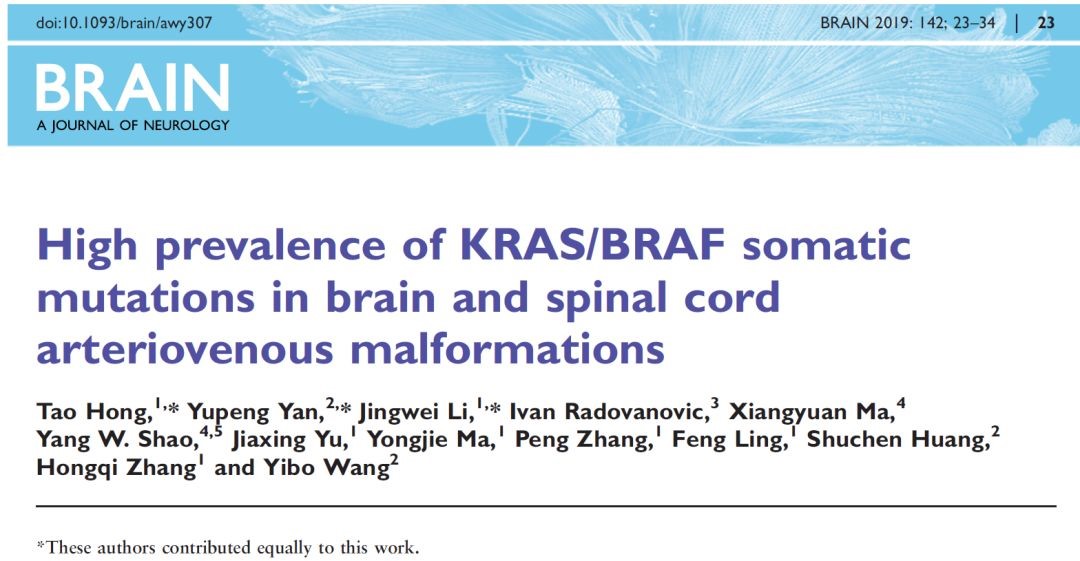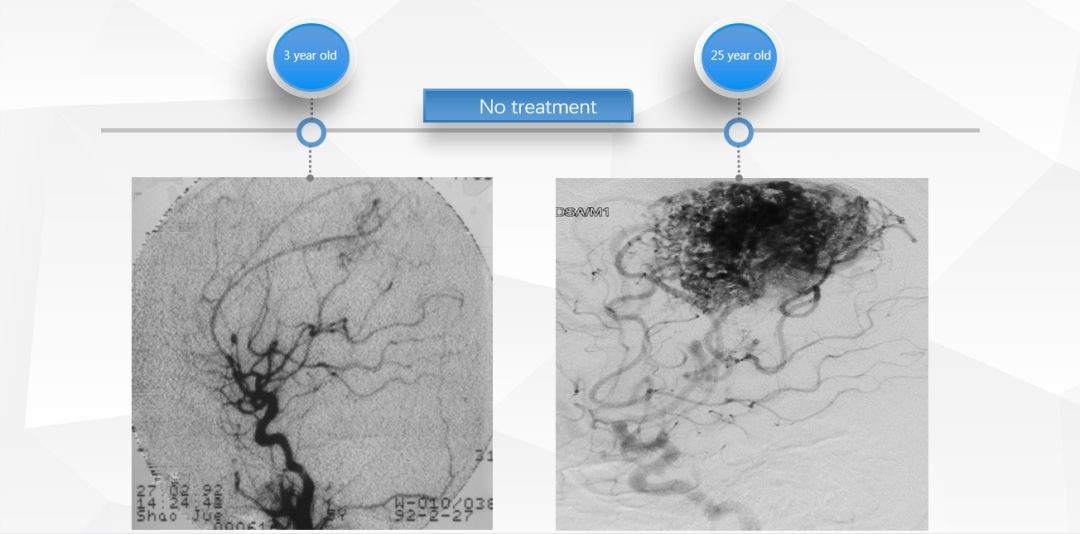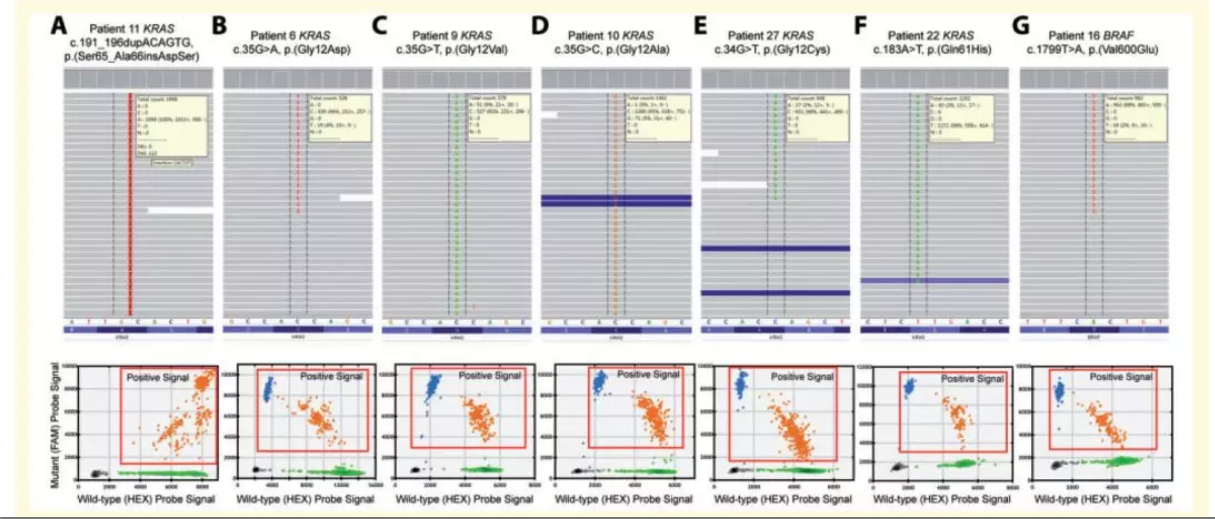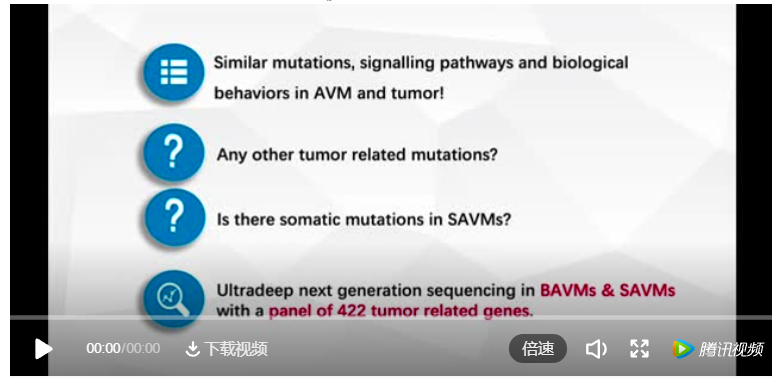《Brain》: Zhang Hongqi’s team and Wang Yibo’s team published an important progress of brain and spinal cord arteriovenous malformations

Brain and spinal cord arteriovenous malformations (AVMs) are the main causes of cerebral and spinal cord hemorrhage in adolescents, which may cause death and severe disability and bring a heavy burden to the family and society.
The results of ARUBA study (A Randomized Trial of Unruptured Brain Arteriovenous Malformations) also made clinicians hesitant and confused about the treatment of AVM. Although the application of interventional and hybrid surgical techniques have made significant progress in the treatment of central nervous system arteriovenous malformations in recent years, more than half of the patients cannot be cured safely.
The difficulty of treatment stems from insufficient research on the pathogenetic mechanism of AVM. As a congenital disease, the genetic research of central nervous system AVM has been in a bottleneck stage, which directly leads to the unclear pathogenesis, and it is impossible to establish an ideal animal model to reflect its biological, hemodynamic and pathophysiological characteristics for further research. In clinical work, we sometimes find the regrowth behavior of the AVM nidus. Why does this vascular disease have tumor-like growth behavior?

Tumor-like growth behavior of brain arteriovenous malformation (case of Xuanwu Hospital)
Starting from this clinical phenomenon, the team of professor Zhang Hongqi(from the department of Neurosurgery, Xuanwu Hospital, Capital Medical University), and the team of professor Wang Yibo( from the state key Laboratory of cardiovascular diseases, Fuwai Hospital, Chinese Academy of Medical Sciences) worked together to study on the effect of somatic mutation in the brain and spinal cord AVMs. Focused on the relationship between tumor-related genes and AVMs, they used a common tumor gene panel to make the ultra-deep sequencing of all exons and used the ddPCR technique to confirm the lower abundance mutations. Finally, they confirmed the central role of KRAS/BRAF somatic mutations in central nervous system AVMs for the first time in the world.

The relevant research results have been published in Brain this month, a leading academic journal of neurological diseases (IF=10.848).Hong Tao(associate chief physician, depart of neurosurgery, Xuanwu Hospital), Yan Yupeng(doctoral student of Fuwai Hospital), and Li Jingwei(doctoral student of Xuanwu Hospital) are co-first authors. Professor Wang Yibo and Professor Zhang Hongqi are co-corresponding author.
The main findings of the study include:
01. Found that the somatic mutation of KRAS/BRAF was as high as 87.1% in brain and spinal AVMs for the first time, which was higher than the 63% mutation rate of KRAS reported in the New England Journal of Medicine in 2018.
02. Found the somatic mutations of BRAF gene in brain and spinal cord AVMs for the first time. As a downstream gene of KRAS, the discovery of somatic mutation of BRAF gene is an important supplement to the central role of this pathway.
03. There is a high degree of genetic homogeneity between brain AVMs and spinal cord AVMs, which provides a basis for the common study of clinical diagnosis, treatment and prognosis of these two diseases.
04. Found two new mutation sites in KRAS/BRAF.
05. The abundance of somatic mutations in the lesions was not related to the age of the patients, but inversely proportional to the size of the lesions, suggesting that KRAS/BRAF mutations in endothelial cells may be the initial factor rather than the secondary change in the occurrence of AVMs.

Types and proportion of KRAS/BRAF mutations in brain and spinal cord AVMs
In this study, they found that the tumor-related pathway, KRAS/BRAF pathway, has a somatic mutation rate of nearly 90% in AVMs, which not only opens up a new train of thought in the genetic study of AVM in the central nervous system, but also has important reference value for the drug targeted therapy of AVM. In the future, we may be able to find a safe drug targeting the mutation gene’s pathway to inhibit the growth and recurrence of this disease, and the mutation rate nearly 90% means that the genetic testing may not be needed for future drug targeted therapy.

The main research results are introduced on the website of 《Brain》via a short video:

Introduction of co-first author
◆Hong Tao
Department of Neurosurgery, Xuanwu Hospital, Capital Medical University
Associate chief physician, currently engaged in neurosurgical surgery and interventional therapy for hemorrhagic cerebrovascular disease. Had engaged in imaging research in the department of Neuroradiology, Western Hospital of Toronto, Canada. Research interests include the pathogenesis and clinical research of brain and spinal AVMs. Published a number of internationally renowned journals as the first author, and presided a national natural science funds. At present, he is also a member of the Youth Committee of Neurosurgery Branch of Chinese Medical Association, a member of the Peripheral Intervention Group of Neurointerventional Committee of Chinese Medical Doctor Association, and a member of the Beijing Xicheng District Youth Federation.
◆Yan Yupeng
Studied in the department of Genetics, Fuwai Hospital, Chinese Academy of Medical Sciences, Peking Union Medical College, since September 2013. And her tutor is professor Wang Yibo. During the master's and Doctor's degree, she participated in two scientific research projects, including the mechanism of refractory hypertension and the pathogenic mechanism of AVMs. Published one SCI paper and one Chinese core journal, and obtained two patents.
◆Li Jingwei
Department of Neurosurgery, Xuanwu Hospital, Capital Medical University
Resident, doctor of neurosurgery. Under the guidance of professor Ling Feng, , he is mainly engaged in the clinical and basic research of brain and spinal cord vascular disease. Published 10 SCI papers (8 as first author) and 22 Chinese core journals (8 as first authors), obtained 1 patent.
Introduction of the co-corresponding author
◆Zhang Hongqi
Department of Neurosurgery, Xuanwu Hospital, Capital Medical University
Chief physician, professor, doctoral supervisor, director of the department of neurosurgery, chief expert of Chinese Intracranial Aneurysm Program, Chairman of Neurointervention Committee of Chinese Medical Doctor Association, Vice Chairman of Neurointervention Branch of Chinese Stroke Association, standing Committee member of Neurosurgery Branch of Chinese Medical Association, standing Committee member of Neurosurgery Branch of Chinese Medical Doctor Association. Pproficient both in microsurgery and endovascular therapy, he integrates these two techniques and has rich clinical and research experience. His clinical and research work are the international advanced level, including cerebral aneurysms, brain vascular malformations, spinal cord vascular malformations and so on.
◆Wang Yibo
State Key Laboratory of Cardiovascular Diseases, National Cardiovascular Center
Principal investigator, researcher, doctoral tutor. Engaging in the precision medical research of vascular disease. He has been awarded the National Science Foundation for Excellent Youth, the nova of Peking Union Medical College, Hundreds of person of outstanding ability in Xicheng district, Star of science and technology in Beijing, etc. Member of standing Committee of Beijing Xicheng District Youth Federation, editor of Nature Reviews Cardiology (Chinese edition), deputy editor of Chinese Journal of Molecular Cardiology, editor of Chinese Journal of Misdiagnosis Medicine, etc. Graduated from Zhejiang University in 2001, graduated from China Union Medical University in 2006, and conducted postdoctoral training at Harvard Medical School(2008.8-2010.10). More than 40 SCI papers have been published(22 as the first /correspondent author), and cited more than 1000 times. Representative papers have been published in Circulation, JACC, Brain, Stroke, Hypertension, Circ Cardiovasc Genet, Int J Cardiol, ATVB and Hum Genet, which also be positively cited by some mainstream magazines.
Any use of this site constitutes your agreement to the Terms and Conditions and Privacy Policy linked below.
A single copy of these materials may be reprinted for noncommercial personal use only. "China-INI," "chinaini.org" are trademarks of China International Neuroscience Institute.
© 2008-2021 China International Neuroscience Institute (China-INI). All rights reserved.